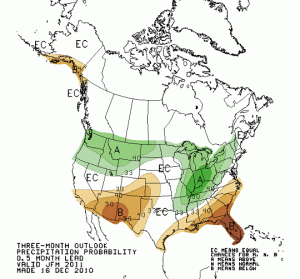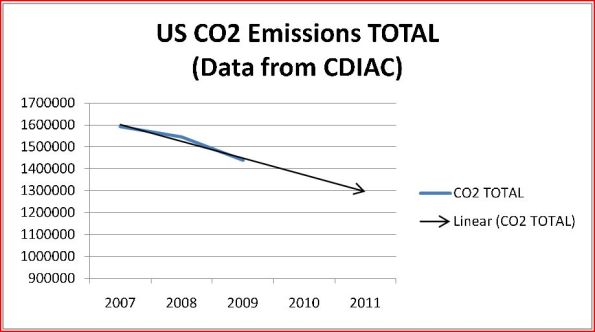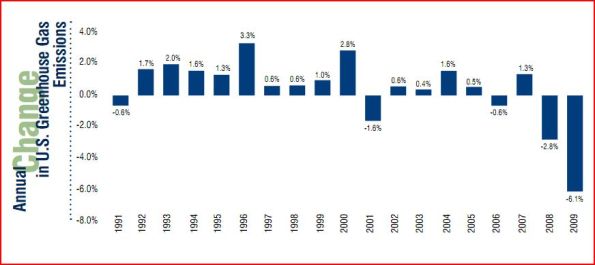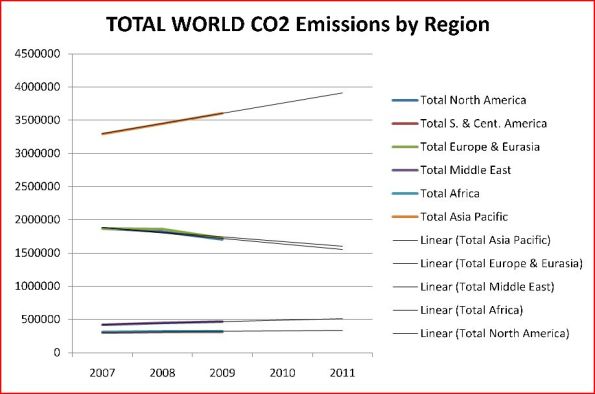Anthropogenic Consensus Falling…
While global warming since the last ice age has been never been disputed, the association of the gigatons of carbon-dioxide expelled into the atmosphere being problematic has been the focus of serious debate. One of the fundamental problems is that all life on this little rock is symbiotically related and based on carbon. How a animal waste molecule and plant food molecule can cause the end of the world as we know it is difficult to reconcile. Since 2005, the World’s Academies of Science have parroted the each of the other country academies on the issue that greenhouse gases were causing a worldwide disruption of temperature, until just recently.
The mostly ignored in the west, Russian Academy of Science has broken from the politics and advocacy with a bold proclamation:
“Global Warming Ended”
“Global warming ends: in the years to come the temperature drop across the planet, although its nature and will be sparing. So the forecast today with a shared corr. Tass, scientists from the Physics Institute of Russian Academy of Sciences / LPI /.
Moreover, according to research conducted by employees of Dolgoprudny Research Station of the Institute together with colleagues from Central and Upper-Air Observatory Hydromet Institute of Nuclear Physics, Moscow State University, the process of global cooling has begun. After a peak in 2005, the year is now the average temperature on Earth has decreased by 0.3 degrees and returned to the level of 1996-1997-second period. By the year 2015, scientists believe, it will fall a further one and a half tenths of a degree, which corresponds to the climate of the early 80-ies. The year 2020 has already make the inhabitants of northern latitudes to remember the harsh winters of 1978 and 1979, years, and in 2040 th year of the planet will begin to “freeze.” However, only a relatively high temperature mark for the period from 1880 to 2006-th year. Then we can expect a decrease of temperature of 0.5 degrees Celsius compared with the current measure of “global thermometer”.
As revealed in the course of studies, the cause of such climate change is not related to the activities of human civilization in general is … space. The fact that the Earth’s atmosphere is constantly get cosmic dust particles, the scientists explained. According to various observations, the amount of precipitated dust varies from 400 to 1000 tons per day.
In turn, the dust particles are effective condensation nuclei of water vapor. Thus, the more dust enters the earth, the greater the cloud cover of the planet, the more it reflects into space flux of solar radiation. Consequently, the climate becomes colder. It turned out that the warming and cooling periods coincide with periods when our planet is “rolled up” in a particularly dense cloud of interplanetary “dirt.”
“The main supplier of this dust – comets – told of the party, Chief Scientific Officer Lebedev Physical Institute, Doctor of Physical Mathematical Sciences Yuriy Stozhkov. – When approaching the Sun at a distance of less than two astronomical units, they shed themselves of the frozen them “coats” of gas and dust and gas form the tails. Then the dust enters the earth’s atmosphere, and eventually settles on the surface. ”
Thus the number of incoming cosmic dust to us must depend on the relative positions of the planets, explained the scientist. “After all, depending on their location changes the trajectory of comets and their number in the space between the Sun and the orbit of Mars, where the zodiacal dust cloud. Based on these considerations, a change in the concentration of cosmic dust and, therefore, the Earth’s climate must be periodic, similar to those observed in the arrangement of the planets, “- said Stozhkov.
To test these assumptions, the researchers compared the frequency of pairs of planets in the location and temporal periodicity of the Earth’s global climate change. It turned out that the global temperature data network of meteorological stations and a calculated scientists Space dust “traffic” virtually identical. The discrepancy is at most 1-3 per cent. Using the obtained regularities, scientists have made predictions of climate change over the next half century.
Work undertaken – not the first, claiming the periodicity of climate change and, accordingly, the incorrect predictions of global warming, experts say FIAN. One of the confirmations of the calculations of Russian scientists began a study of ice cores extracted from boreholes drilled above Lake Vostok in Antarctica. The longest core length of 3623 m allowed to conclude that changes in temperature over 420,000 years. During this time the Earth was at least four major temperature fluctuations in a big way at 8 degrees! So the upcoming cold spell can be considered gentle. In any case, a century ago, the planet was one degree colder than today. And it is for global climate very much, say meteorologists.”
http://www.ras.ru/news/shownews.aspx?id=6f0db8a9-57b4-46df-873b-8d506922c6b6#content
When one of the largest academies of science break away from the fold, is there any more consensus?
A Secret the Green-Machine Does Not Want You to Know
Numerous advocacy groups have been clamoring for more than 20 years about the need to take action against climate change. Untold billions of dollars have been poured into this campaign with the goal to reach a global agreement similar to the Montreal protocol of banning ozone depleting gases, but as many are aware of the Copenhagen 2009 conference, this did not occur with carbon dioxide; namely fossil fuel CO2. In the United States, a national attempt at capping CO2 gases met a similar fate.
Policies of returning back to “normal” fossil fuel CO2 levels are typically at the 1990 level of emissions. It is never mentioned where we are with our “out of control” emissions, but we just are constantly warned that we need to give our government the okay to take over the “top-down” control of CO2 emissions. Currently, more and more citizens are questioning what could be a global policy that would cost trillions of dollars. Oddly enough, there is good reason for this lack of trust.
The data is for 2007-2009 marked preliminary. Confirmation of the general trend is confirmed by the EPA “Fast Facts“:
The kicker is that according to CDIAC, the magic number of 1990 fossil fuel emissions level is…
1330618 (thousands of metric tons)
At the end of 2011, the US should be close to 1300000 (thousands of metric tons) in emissions (linear extrapolation). All of this success without a global commitment or the EPA really clamping down with regulation. All that was needed was a world class recession and most manufacturing shipped to China and India.
Mission Accomplished!
Wandering in Romm’s World
While wandering aimlessly, I stumbled upon a post that struck me. Since I have never been invited to or have read any books on the matter, I was curious on what this *wedge* might be.
Much like the many *games* that are played by the CAGW establishment, here is yet another:
In this “game”, it appears that you have pieces of “pie” to place on the “problem” to achieve a solution or “covering” of the problem. Let us say that there is a CAGW problem, you have 8 pieces of a 45 degree angle wedge of pie to cover over the problem (mitigate, avoid, piss-on, piss-off, who knows…). These are known as the “8-Strategies”. Okay, check.
Of these “8-Strategies”, there are the following options:
1. Renewables & Biostorage Wedges (Green; of course)
2. Efficiency & Conservation Wedges (Yellow)
3. Fossil-Fuel Based Wedges (Blue)
4. Nuclear Electricity Wedges (Red; of course)
5-8 … No prefabricated wedges… hmmm…
Keeping emissions flat will require cutting projected carbon output by about 8 billion tons per year by 2055
is the goal. Let us try to unravel this.
To make the problem more tractable, we divided the stabilization triangle into eight “wedges.” (Figure 4) A wedge represents a carbon-cutting strategy that has the potential to grow from zero today to avoiding 1 billion tons of carbon emissions per year by 2055, or one-eighth of the stabilization triangle. The wedges can represent ways of either making energy with no or reduced carbon emissions (like nuclear or wind-produced electricity), or storing carbon dioxide to prevent it from building up as rapidly in the atmosphere (either through underground storage or biostorage).
Okay, I shall not bore you with the silly linear slope of carbon production of fig. 4. If you are inclined to read it, feel free.
Back to the post. So, after the game pieces are cut, the *wedges* represent a billion tons a year that can be placed over the problem.
1. Renewables and Biostorage :
- Wind-generated electricity
- Solar electricity
- Wind-generated hydrogen fuel
- Biofuels Forest storage Soil storage
2. Efficiency & Conservation:
- Increased transport efficiency
- Reducing miles traveled
- Increased building efficiency
- Increased efficiency of electricity production
3. Fossil-Fuel-Based Strategies:
- Fuel switching (coal to gas)
- Fossil-based electricity with carbon capture & storage (CCS)
- Coal synfuels with CCS Fossil-based hydrogen fuel with CCS
4. Nuclear Energy
- Nuclear electricity
Wow. What an interesting teaching tool. Now, what I am understanding is that Joe Romm thinks that the Nuke wedge is not 1.00 but 1.77, which is a significant contribution from the “warmer” side of the CAGW debate. I would have to modify the Renewables and Efficiency/Conservations to reflect a 77% reduction/effectiveness and this game might take off 😉
Talking About the Weather
Weather and climate change seems to fit with the human psyche very well. It is much to do with the cycle of life and people can relate positively or negatively depending on their disposition or enthusiasm. I personally enjoy the capricious nature of weather or climate and the stormier the storm, the more exciting it is.
This Northern Hemisphere winter, I like a good many people were interested in the decadal (plus a year or two) La Nina in conjunction with a low solar activity and how this might affect this particular weather/climate season. Some of the experts out there have projected for previous winters, some sort of warm sogginess that would represent a tropic monsoon. Judah Cohen working with MIT has worked out this forcast for the United States:
While I take exception to the vagueness of this “anomaly” measurement, this graph/depiction is actually a very well known behavior of a La Niña cycle. This is not extraordinary forecasting.
Currently, the weather for the West Coast is quite wet and cool, which is close on the forecast model. The curiosity is the layout of current conditions and conditions of December. As of now, we are looking at a pattern for the first two weeks of January 2011 that looks like this:
Unless March plans a late game come back, I am not seeing where this model is taking into consideration oceanic conditions that appears to

heavily influence the US weather patterns. Barrow Alaska seems to be enjoying temperatures 1 degree above freezing, but no other US region appears to be enjoying these toasty influxes.
An amusing 25-30% of the country appears to be enjoying a -4 degree anomaly of global climate disruption. This pattern is the same for most of Europe and Siberia as well.
As for the Precipitation Forecast, it is equal copy-and-paste of the La Niña tenancies, but is lacking in skill.
Here we have a typical forecast of a La Niña coming out of a El Niño. Again, there is no accounting for the rapid drop in the ocean conditions this fall bringing us to this decadal characteristic of weather.

The Southwest is still holding on to the “drought-like” conditions, but Florida may need an update. Snow-pack continues to build in California:
Finding anything that shows anything interesting in the skill of forecasting by Judah Cohen is something to be
desired.

Science Poker
Bungled batts would ‘scare’ public
AAP
The number of homes found with unsafe insulation from the federal government’s bungled scheme will be kept secret because it would scare the public and ruin fraud investigations, the responsible bureaucrat has argued.
The government on Monday released an update on its progress to wind down the $2.45 billion home insulation scheme.
An auditor-general’s report last week found safety practices were overlooked in the Environment Department’s rush to roll it out.
It has left homeowners fearful of fire hazards in their roofs as well as “live” ceilings caused by foil insulation touching electric wires.
The government has either completed or arranged times to inspect about 55,000 non-foil installations and will finish inspecting foil insulation jobs by Christmas.
Climate Change Minister Greg Combet and his parliamentary secretary, Mark Dreyfus, said the CSIRO and an independent consultant would be commissioned to analyse the inspection data and publicly release the results.
But data on inspections to date won’t be released as it would be skewed, as they target work by businesses linked to the fires.
Climate Change Department deputy secretary Martin Bowles was forced to defend the decision in a senate estimates hearing on Monday.
Mr Bowles said data on the foil inspections was being provided to the department and he believed “the overwhelming majority” of work was problem-free.
Releasing the information could compromise future fraud inquiries, he argued.
“It can create apprehension in the broader community and it can further do damage to the industry if, in fact, inappropriately that kind of information is out in the public arena,” Mr Bowles said.
“If in fact they are fraudulent and I start to release the information out there … it scares the horses.”
Liberal senator Simon Birmingham was “gobsmacked” Mr Bowles hadn’t brought the data, compiled by consultants PwC, to the hearing.
The numbers could be released without risking the success of future fraud investigations, he said.
“I find it astounding that in the thick folder of briefings before you, you don’t have any briefings that give us any other feedback about what these inspections have found,” Senator Birmingham said.
Mr Bowles said he deemed the “appropriate” statistics to release were those in Mr Combet’s media release.
Public Interest In Climate Protection Wanes (Again) in Germany – Rahmstorf Whines
By P Gosselin
Despite all the media über-hype about this year’s weather extremes, which are normal to begin with, and the upcoming Cancun Conference, German public interest in climate protection fell yet again during the 3rd quarter of 2010, from 56 to 55, according to the co2online GmbH, a program set up by the German Ministry for Energy.
The reason for the drop was due to the lack of interest by the media in reporting on climate change. The public is bored by the topic.
The Climate Barometer is published every quarter and is based on the evaluation of 4 indicators, which are converted to form the Climate Barometer index.
Experts complained about the continued wane in public interest. Thomas Hirschof the organisation: Bread for the World:
In the energy debate, climate protection is an issue that was very much overshadowed by the recent issue of nuclear power in Germany.
Prof. Dr. Stefan Rahmstorf, Potsdam Institute for Climate Impact Research:
Flooding in Pakistan and heatwave in Russia brought the topic in the media, but incredibly little. There is also very little discussion on the causes of such extreme events.
I can’t help Mr Hirsch, but perhaps I can give Dr Rahmstorf, Prince of Panic, some background on extreme weather events and their causes.
Cyclones globally are near record lows and have been falling 20 years. So it can’t be because of global warming. So get a life Dr Rahmstorf. You’re fooling no one.
Andrew Revkin shocked that science is evolving
by Luboš Motl
Andrew Revkin wrote about his exchanges with Hal Lewis:
A physicist’s climate complaints (Dot Earth)
The first observation that Revkin finds utterly shocking is that 20 years ago, Hal Lewis didn’t quite understand that and why the opinions that the changing climate justifies expensive interventions was unsupported by science. I knew very little about the changing climate 20 years ago, too.
However, for Andrew Revkin, the fact that someone can learn something new in 20 years is a shocking news. I will discuss this point later.
Revkin has also asked a few well-defined, elementary questions to Lewis. And Lewis gave him sensible answers. Finally, Revkin invites a distinguished guest blogger who supplements Revkin’s complaints about the “man-made science change” which he clearly equates with “global science disruption” (because science shouldn’t change, should it, Andy?) with a hateful rant.
The author of the rant, David Ropeik, is a remarkable personality who should be worshiped by the Internet and the world population because he is a student of technological risk, whatever this bizarre discipline is supposed to mean. It’s the second most distinguished position in the world after being Barack Obama. To evaluate the technological risk, one primarily has to know the actual technology in question. So the experts in technological risks are the experts in the technology itself.
But the remarkable student clearly has to study something different. You don’t need to guess twice what this novel discipline means: it’s a far-left, neo-Luddite ideological movement that just tries to claim that pretty much all technology is risky. Those people know – and are expected know – nothing about the actual technologies, or anything about the real world, for that matter. Nevertheless, a self-evident idiot is found appropriate by Andrew Revkin to teach a veteran nuclear physicist about technology, technological risk, and the climate science.
Are you serious, Andy? Can’t you really see that Mr or Ms David Ropeik’s brain is just a pile of worthless trash?
Another skeptic
CO2 and climate: a viewpoint of engineering.
Rarely has a debate as concerned about public opinion and the media as that rages today about climate change and the possible responsibility of humanity to it.
Climate scientists themselves are divided into two warring factions. The majority of them seem to fall into the camp “official” one who supports a view that can be summarized in four points:
– The temperature of the earth is increasing and will continue to do so dangerously
– Human activities and particularly emissions of carbon dioxide (CO2) are the major cause of the phenomenon
– We must act to control and reduce these
– There are ways to get there and need to implement urgently to “save the planet.”
But other climatologists, who are increasingly vocal, challenging the very foundations of that reasoning. They argue that climate variations have always existed, and there is no evidence that human activities, including CO2 emissions, have a significant influence on its evolution and the average global temperature.
When oneself is not a climatologist – and there are very few in the world – is it possible to get an opinion? Faced with the difficulty of the subject and scope of the controversy, the temptation is to respond negatively to this question. This article will try to show that it is not, and that a rational approach that could be described as an engineer, that is to say from the facts, can lead a number of conclusions questionable and difficult to throw new light on this complex subject.
Rather than enter the debate between them climatologists about climate change and the potential for humanity to it, the reasoning suggested taking the problem upside down and share a simple question “What is our flexibility with regard to CO2 emissions? Y do we something?
William M. Connolley banished from the issue of climate change.
William M. Connolley long time, his personal views with impunity under the theme of climate change en.wikipedia more than 5428 articles in the press.
Nor did he stop there to conceal the traces of his crusades against “climate deniers” with the help of his Admin privileges (through manipulation of databases).
In connection with the outlet of the scientist Hal Lewis of the American Physical Society, he has once again gone all out to lead his campaign on.
This was clearly the straw that brought the barrel to overflow: William M. Connolley was 7-0 against in Wikipedia topic banned from climate change.
Continue Reading on Oekologismus










